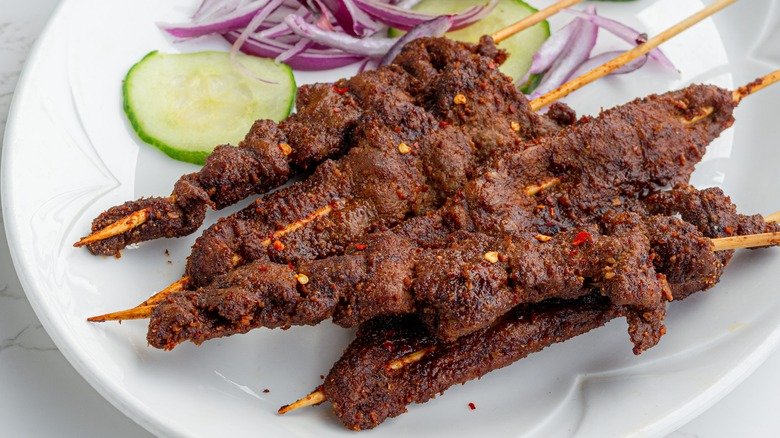Guinean cuisine is a vibrant reflection of the country’s rich cultural heritage. This West African nation boasts a diverse array of traditional dishes, each showcasing the unique flavors and ingredients of the region. In this culinary journey, we’ll explore the traditional ingredients, cooking techniques, and popular dishes that make Guinean cuisine a true delight.
Traditional Guinean Ingredients
Guinean cuisine is built around a core of staple ingredients, including:
– Rice: A fundamental grain in Guinean cuisine, often served with stews and sauces.
– Cassava: A versatile root used in a variety of dishes, from fufu to cassava leaves.
– Peanuts: A common ingredient in Guinean cooking, adding flavor and texture to dishes like mafe and peanut soup.
– Meat and Fish: Grilled meats and fish are staples in Guinean cuisine, often marinated in local spices and herbs.
Popular Guinean Dishes
Some must-try Guinean dishes include:
– Jollof Rice: A flavorful one-pot dish made with rice, tomatoes, onions, and spices.
– Mafe: A rich peanut-based stew made with meat or fish, vegetables, and a blend of spices.
– Fufu and Peanut Soup: A traditional dish made with pounded cassava or yams, served with a creamy peanut soup.
– Grilled Fish with Yassa Sauce: Fresh fish marinated in a tangy yassa sauce, then grilled to perfection.
Regional Variations in Guinean Cuisine
Guinean cuisine varies across different regions, each with its unique flavor profiles and ingredients:
– Coastal Cuisine: Fresh seafood is a staple in coastal regions, often grilled or stewed in flavorful sauces.
– Savannah Cuisine: Grilled meats and stews are popular in savannah regions, where livestock is abundant.
– Mountain Cuisine: Hearty stews and fufu are staples in mountainous regions, where ingredients are often scarce.
Influences on Guinean Cuisine
Guinean cuisine has been shaped by various cultural influences, including:
– West African Traditions: Guinean cuisine shares many similarities with other West African countries, reflecting a shared cultural heritage.
– Colonial Influences: French, Portuguese, and Spanish colonial powers have left a lasting impact on Guinean cuisine, introducing new ingredients and cooking techniques.
– International Flavors: Guinean cuisine has been influenced by international flavors, including Asian, Middle Eastern, and European cuisines.
Preserving Guinean Food Culture
Efforts are being made to preserve and celebrate Guinean food culture, including:
– Traditional Cooking Techniques: Passing down traditional cooking methods and recipes to younger generations.
– Food Festivals and Celebrations: Organizing food festivals and celebrations to showcase Guinean cuisine.
– Culinary Tourism: Promoting culinary tourism to allow visitors to experience Guinean cuisine firsthand.
Conclusion
Guinean cuisine is a vibrant and flavorful reflection of the country’s rich cultural heritage. With its unique blend of traditional ingredients, cooking techniques, and cultural influences, Guinean cuisine offers a culinary journey like no other. Whether you’re a food enthusiast or simply looking to explore new flavors, Guinean cuisine is a must-try.

